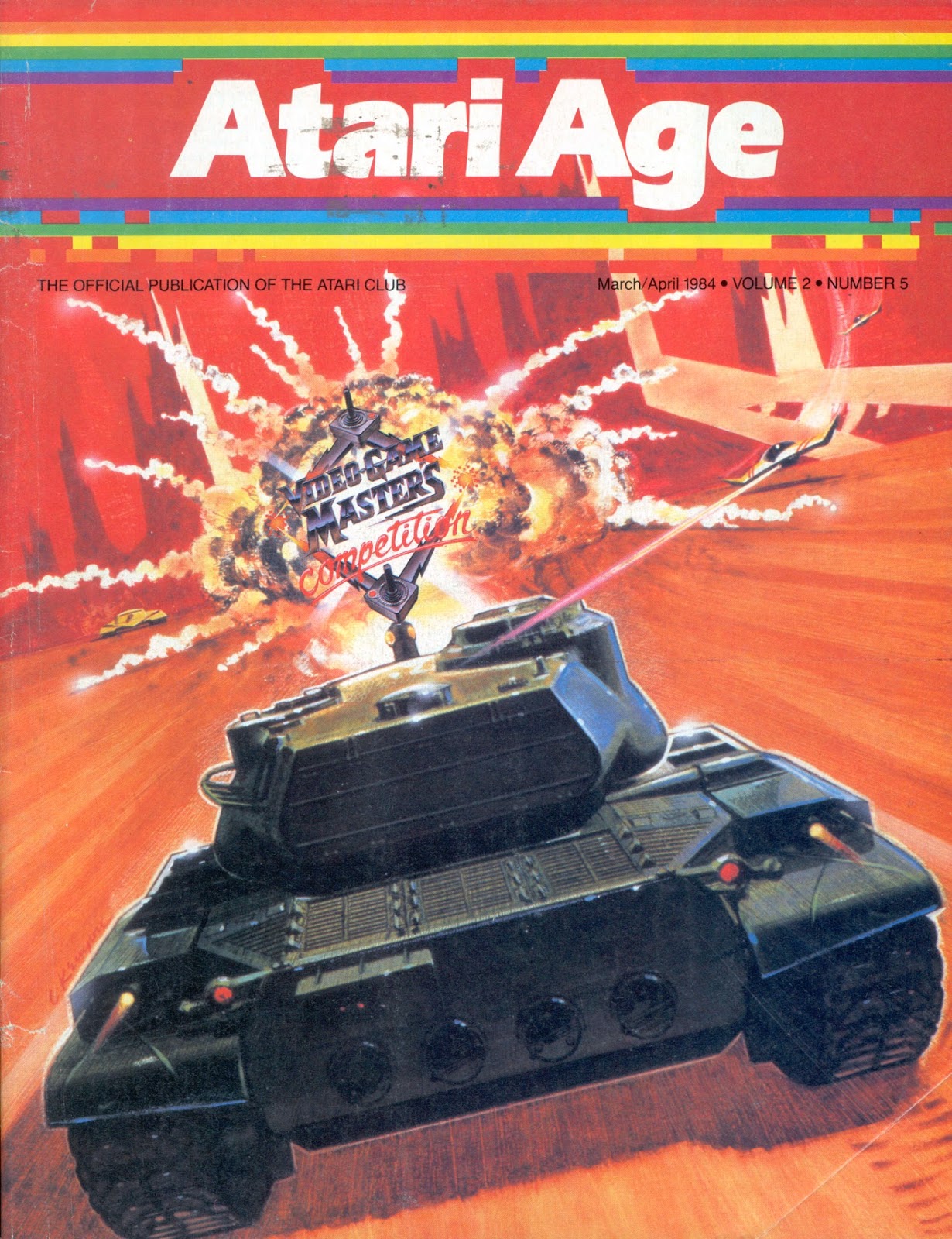- Tag Archives Atari 2600
-
-
 Pitfall II: Lost Caverns
Pitfall II: Lost Caverns
Advertisement for Pitfall II: The Lost Caverns by Activision for the Atari 2600, Colecovision, Atari 8-bit computers and Commodore 64 from the Summer 1984 issue of Activision Fun Club News.
The original Pitfall was one of the classic Atari 2600 games and was the biggest seller for that system in 1982. Pitfall II: Lost Caverns was its sequel and was released in 1984 for the Atari 2600. It was also ported to the Atari 5200, Apple II, Atari 8-bit, Commodore 64, TRS-80 Color Computer, ColecoVision and there was even an arcade conversion among others.
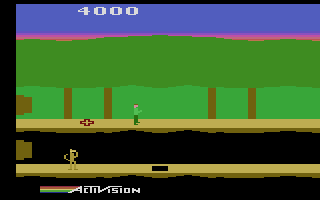
Atari 26001984 wasn’t a great year for video games and while the Atari 2600 would continue to have occasional new releases for many years to come, Pitfall II was one of the last major releases. It is also widely considered to be one of the best games on the 2600. While the original Pitfall basically had only a few repetitious screens and two vertical levels, Pitfall II expanded that greatly with a world that consisted of 27 horizontal levels by 8 screens in length. One unique aspect of the game is that you essentially have unlimited lives. If you die, you lose points and are taken back to the last checkpoint but you never start over.
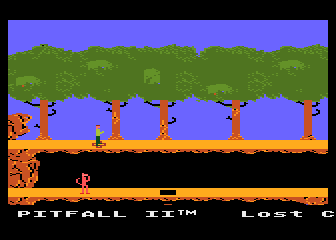
Atari 8-bitThe ports for the Atari 8-bit and Commodore 64 were done a little differently. The Atari 8-bit ports used much of the same source code as the Atari 2600 version and additional levels were added as easter eggs. The Commodore 64 version was re-written from scratch but contains only the original levels. The result is that the Commodore 64 version looks and sounds somewhat better but you get more play time out of the Atari 8-bit version.
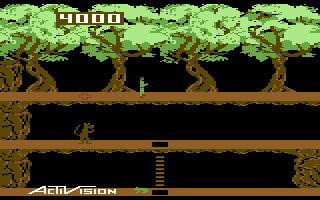
Commodore 64This is also a rare instance when a home game was ported to the arcade. The arcade version was done by Sega and was released in 1985 with updated graphics. It was somewhat of a combination of both Pitfall games. It was shorter than Pitfall II with only two levels and featured both limited lives and a timer. Have to make those quarters somehow…
-
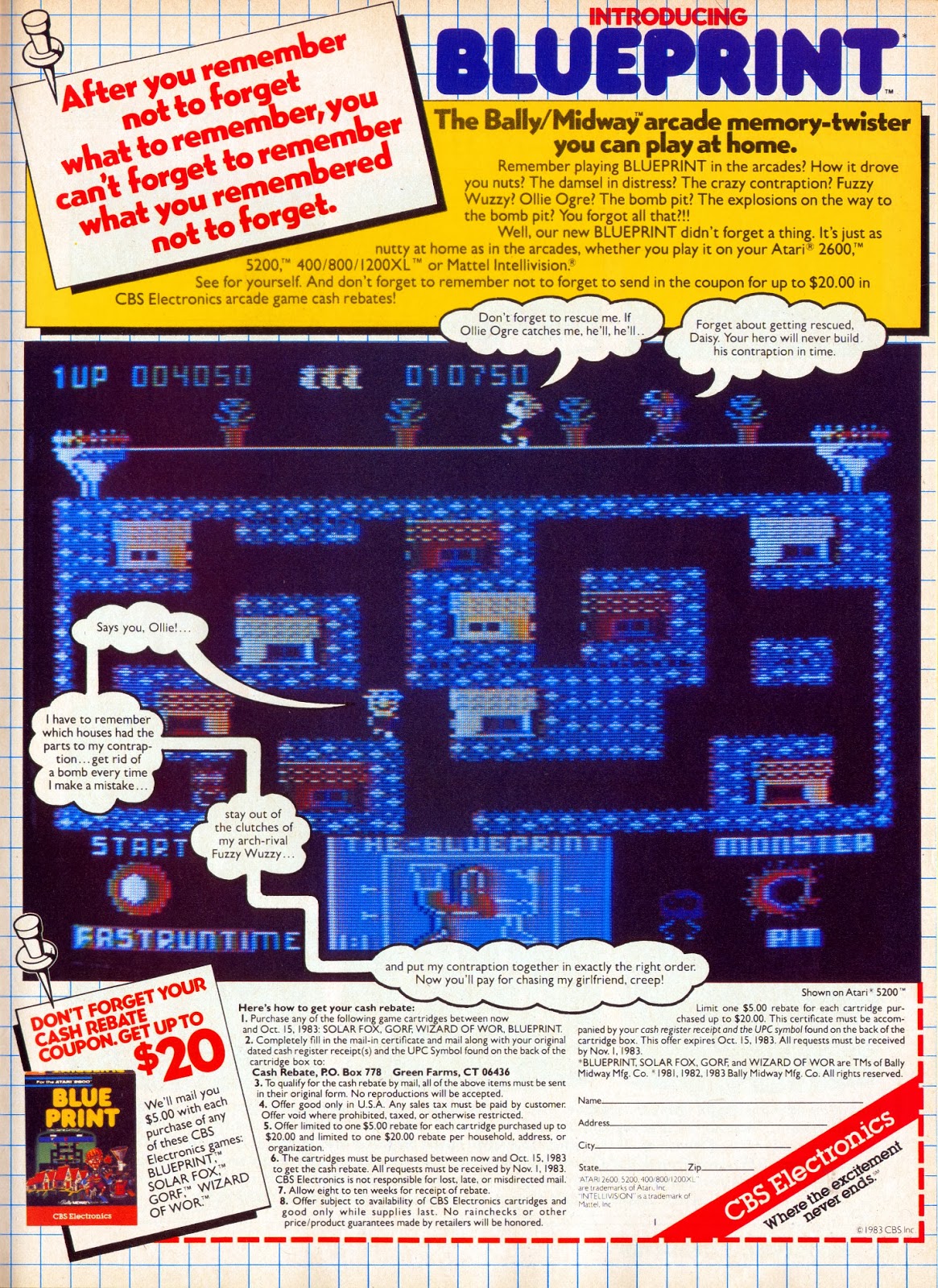 Blueprint (Atari 2600, Atari 5200, Atari 400/800/1200XL, Intellivision)
Blueprint (Atari 2600, Atari 5200, Atari 400/800/1200XL, Intellivision)

Blue Print was one of those classic games I never really played until long after its prime. It was originally an arcade game from Bally/Midway that was released in 1982 but was ported to several popular home systems of the time, including the Atari 2600, Atari 5200, and Commodore 64 and Intellivision the following year. I guess it wasn’t as popular as a number of other games at the time like Pac-Man, Galaga, etc. but it was popular enough to warrant home conversions by CBS. Interestingly, the ad above mentions versions for the Intellivision and Atari 8-bit computers while not mentioning the Commodore 64. I don’t think official versions for the Intellivision and Atari 8-bit computers were ever released.
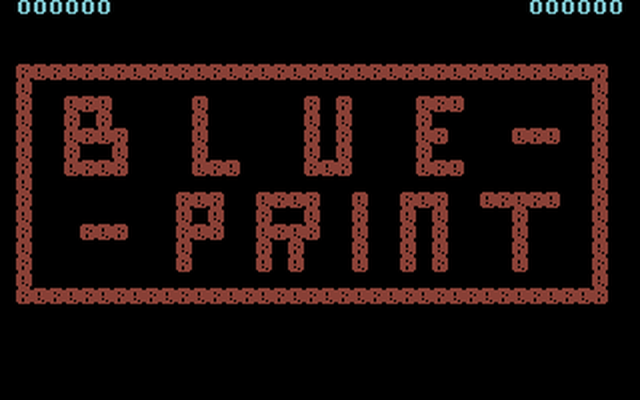
The theme somewhat resembles Popeye but the game play is different. The player takes the role of J.J. whose girlfriend is being chased by an ogre. Ollie Ogre chases here along the top of the screen occasionally knocking over flower pots. You must save Daisy while avoiding the flower pots and the occasional monster that roams the screen.
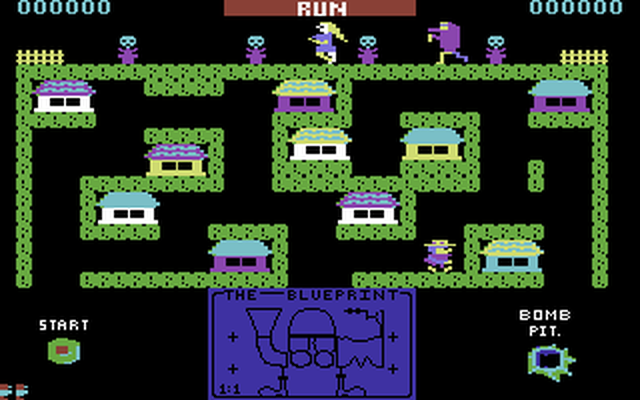
So how do you save Daisy you ask? Well, it isn’t as simple as climbing to the top of the screen or simply picking up a weapon to attack with. No, it is much more convoluted than that. You must instead search the ten houses scattered about the screen in search of parts for a machine which is a contraption that you drive and shoot with. While searching the houses, if you find a piece of the machine, you must position it in the correct place on the bottom of the screen. However, sometimes instead of finding a part of the machine you will find a bomb instead. When that happens you must take it to the pit (also at the bottom of the screen) before it explodes.
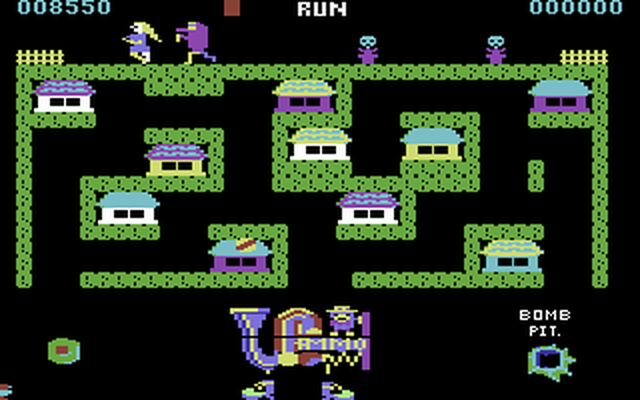
Reviews of this game are quite mixed and it seems to be something people either loved or hated. I played it only minimally and it never really attracted my interest. Having said that, I think it is always worth trying out these classic games that you have never played. But which version to try? I guess it depends. If you have an actual physical system around that this game was released for then I would find it and try it for that. The Atari 2600 version is going to be the most limited. The Commodore 64 and Atari 8-bit (including Atari 5200) version are probably going to be among the best home versions. The arcade version is obviously going to have the best graphics and sound but the Commodore 64 version adds some extra stuff. I guess if you are going to emulate, you might as well start with the original arcade version. For home versions, pick your favorite system. For me that’s almost always the Commodore 64.
The screen shots above are from the Commodore 64 version of the game. The ad at the top comes from the October 1983 issue of Videogaming Illustrated.
